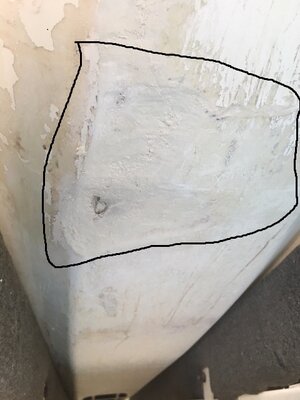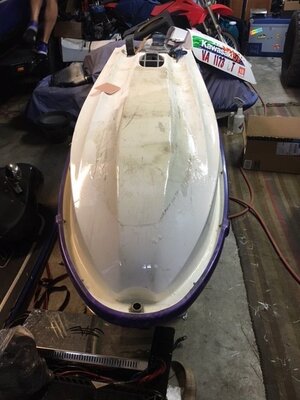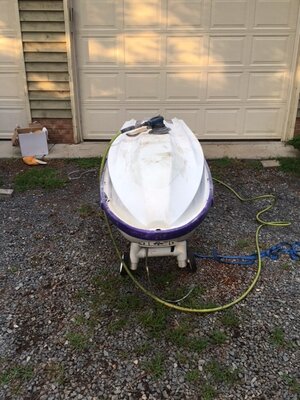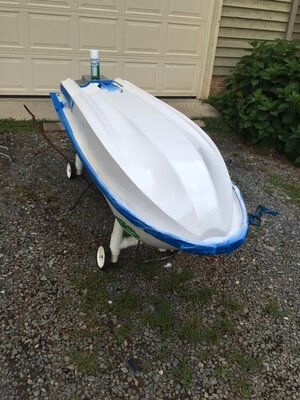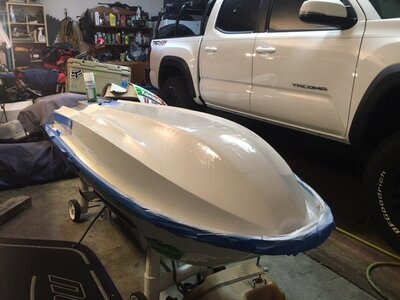The aluminum tape is usually not necessary, if we rapid from the outside in then we'll push the glass into the hole as we coat it with resin on the brush. That helps he glass grab onto the hull, we still build it up with pieces we can layer to build up the void, and cabasoil does great. The issue is typically strength and also duration of the repair. The method of glass if my boss does insures the repair is goi to be stronger than the original hull. Dry time at a day is not bad at all, we glass on a Monday, body work and prime Tuesday, block primer out and prep it for paint Wednesday, colorsand Thursday for that mirror finish and that's a done deal. Usually doing anywhere from 2-5 skis at a time depending. I'm not the one with all the knowledge, I'm just learning, but it's crash to hands on feel the different materials each company used in their skis. I own an fx1, 2001 round nose, 96 blaster, 90 square, sxr hull, and an x2. The kawasakis are definitely fiberglass however you can't really feel it until you grind into it a ways, they used a very weird layup that makes it seem almost like smc but it's definitely glass. Square and round nose bottom is smc, but the square seems a lot more plastic like, very weird layup schedule for at hull, round nose with the "hand layed" style topdeck is a dream to work on but the bottom deck is same as a square, but when you grind into a rn it's much more glass feeling than the square which is odd because rumor has it the bottom decks are the "same". THey are the same design but definitely different schedule. Fx1 being all "hand layed" style is amazing, when you repair or add glass it doesn't stick out like a sore thumb on the inside of the hull. I was able to completely rework the underside of my fx making it as smooth as a factory superjet on the underside. Notice when you look at superjet in the light you will see on a square, they are usually wavy like an Oceanside beach. Even on the rn hulls typically you will notice one or both sides of the tray walls will be either sucked in or pushed out due to the foaming inside. Too little foam will cause the wall to suck in, too much foam and it will push out. Most of the time we have to repair a hole though it's on a vx110 from the rental fleet, they are extremely easy to work on. My boss is a standup rider but he doesn't get on the X much anymore let alone gotten to ride his skis in forever. Maybe he can chime in, I'll see what he thinks about your method for repair, it would definitely save a lot of dry time in the winter.



















